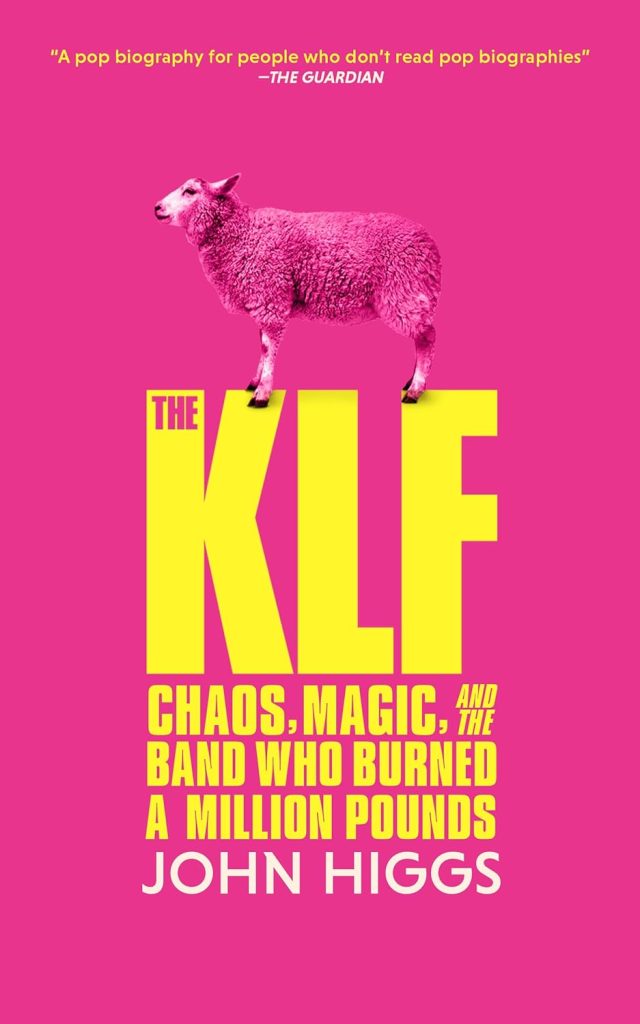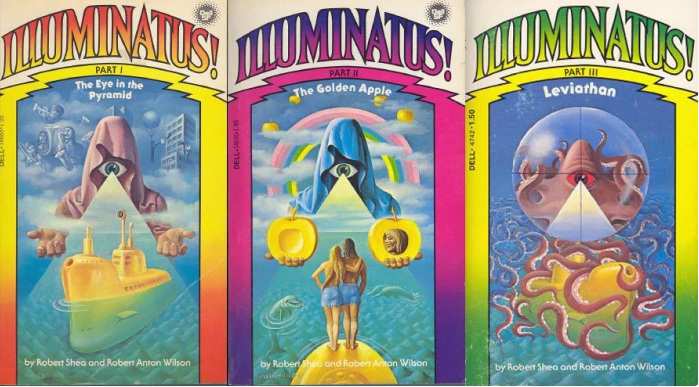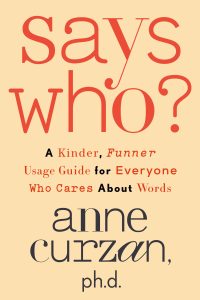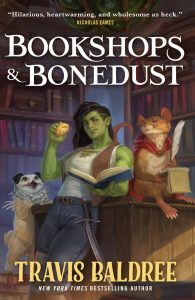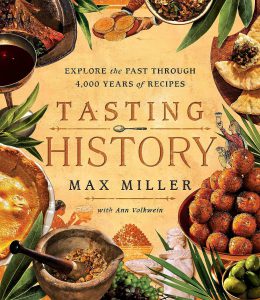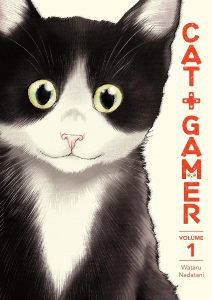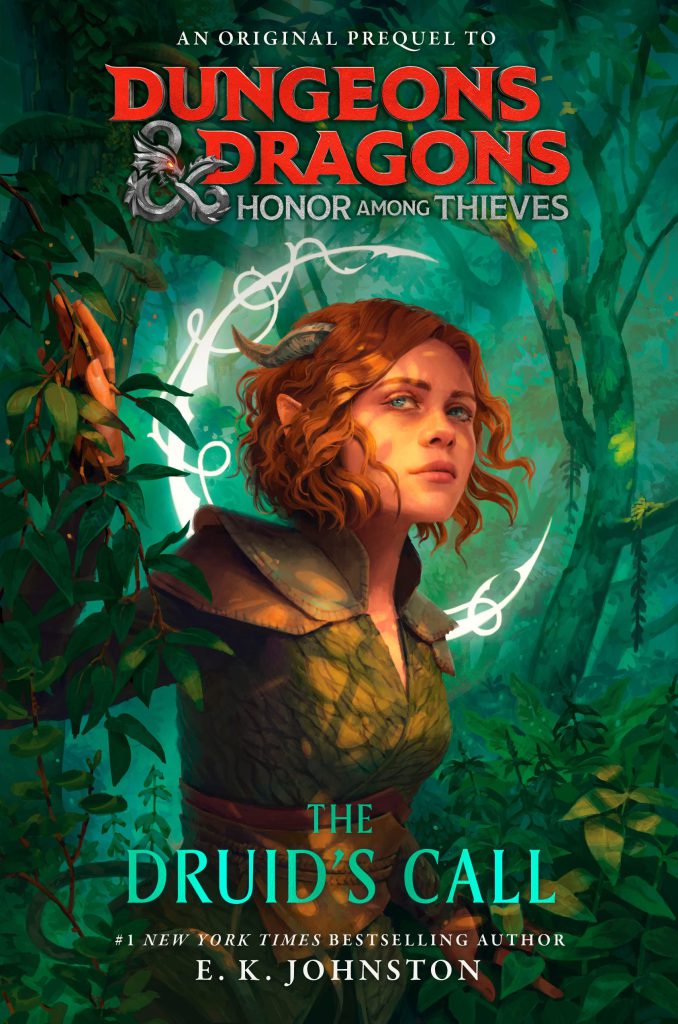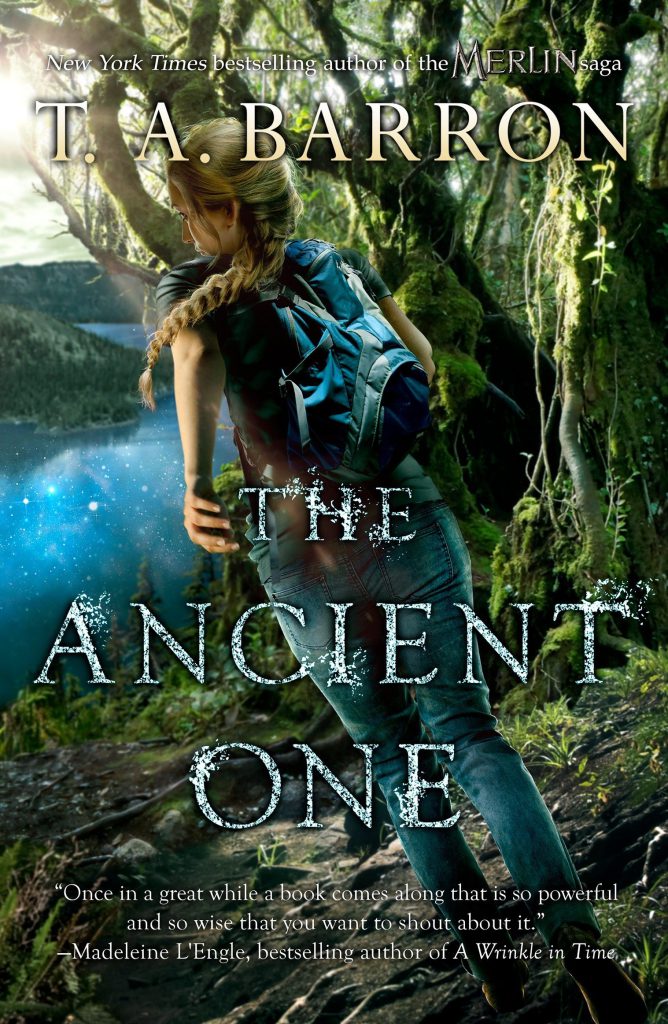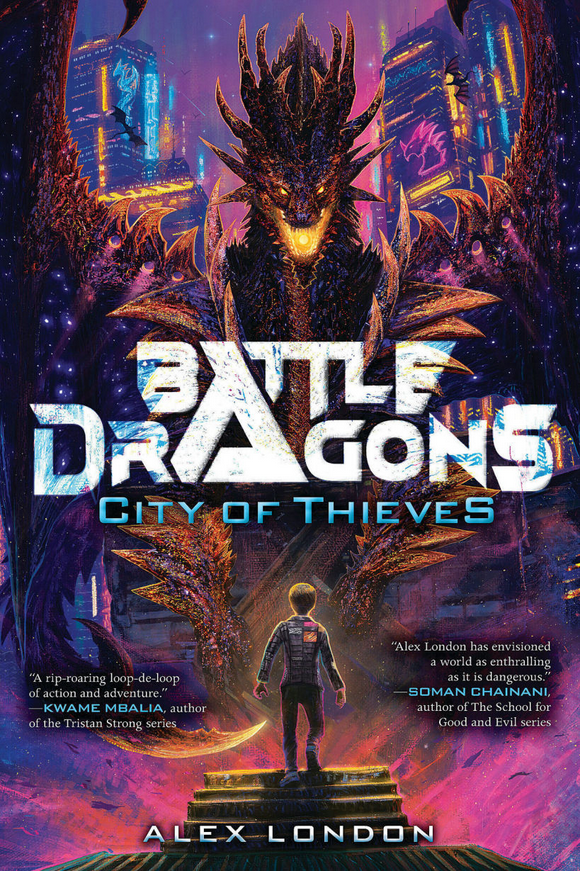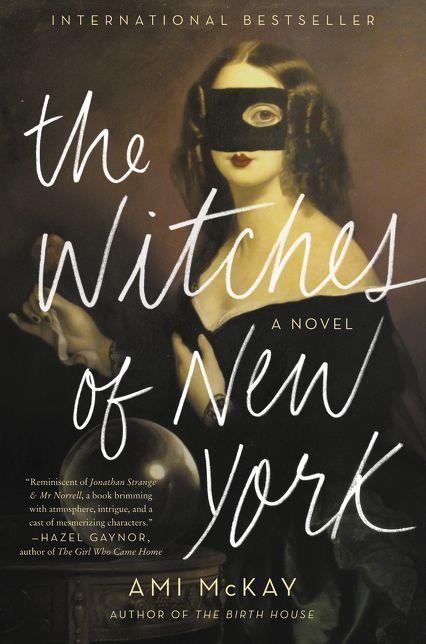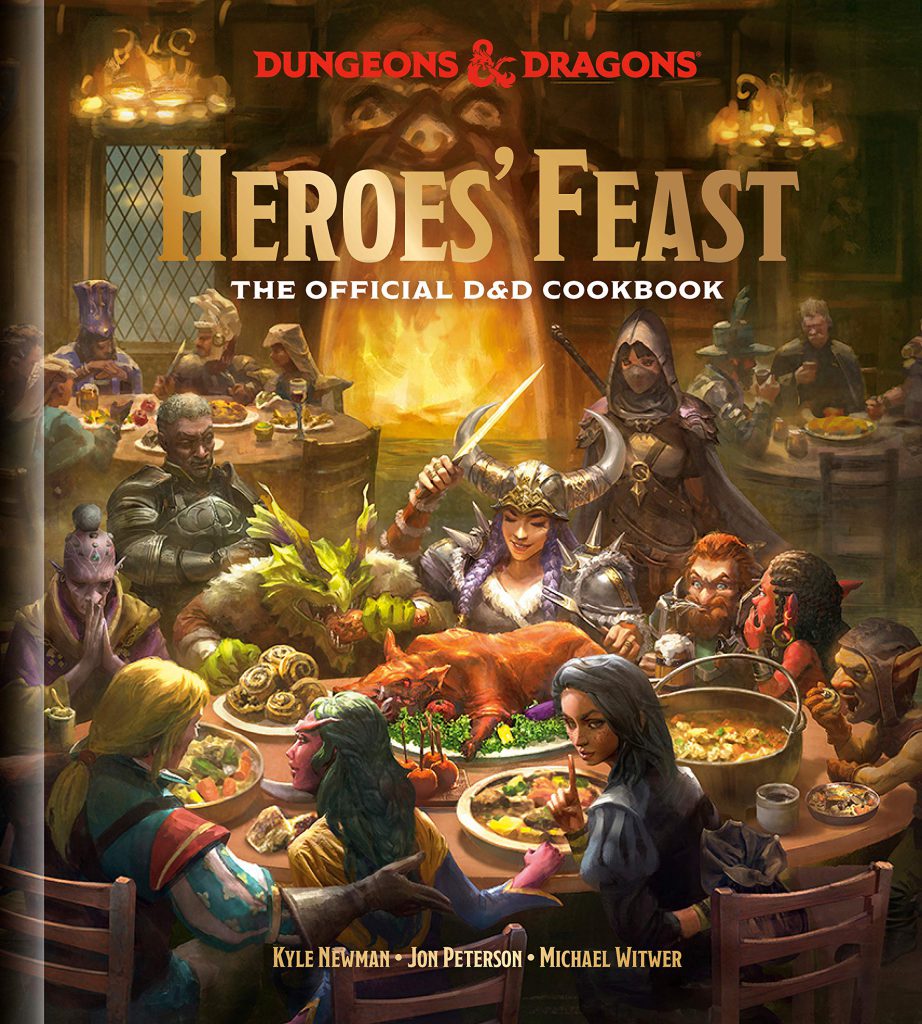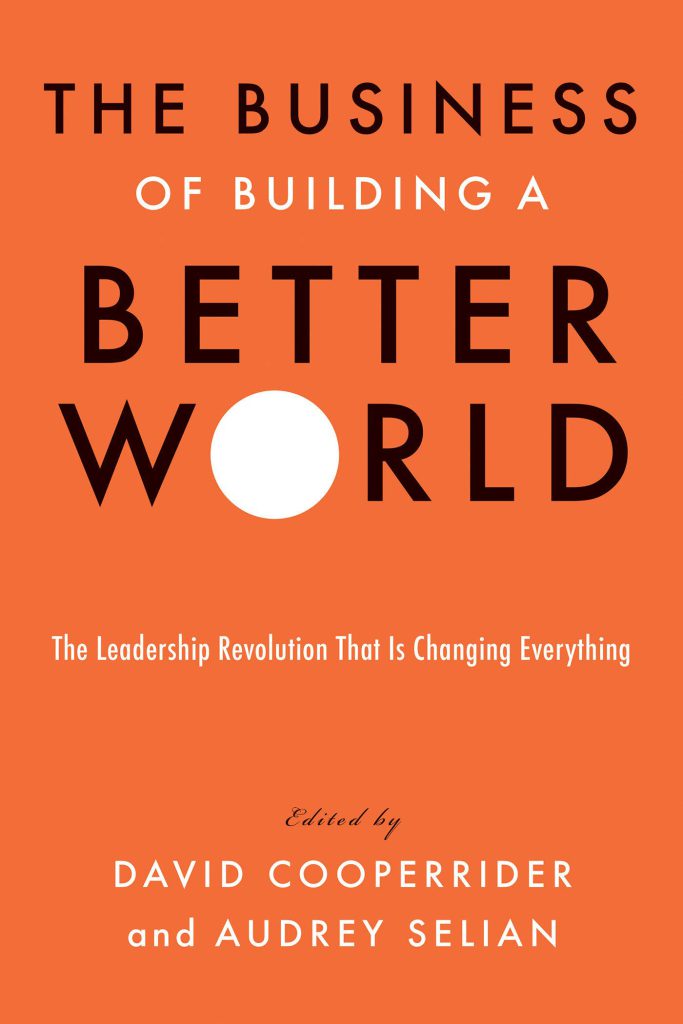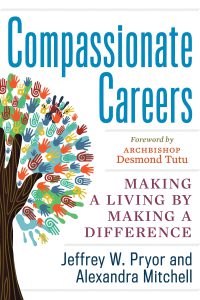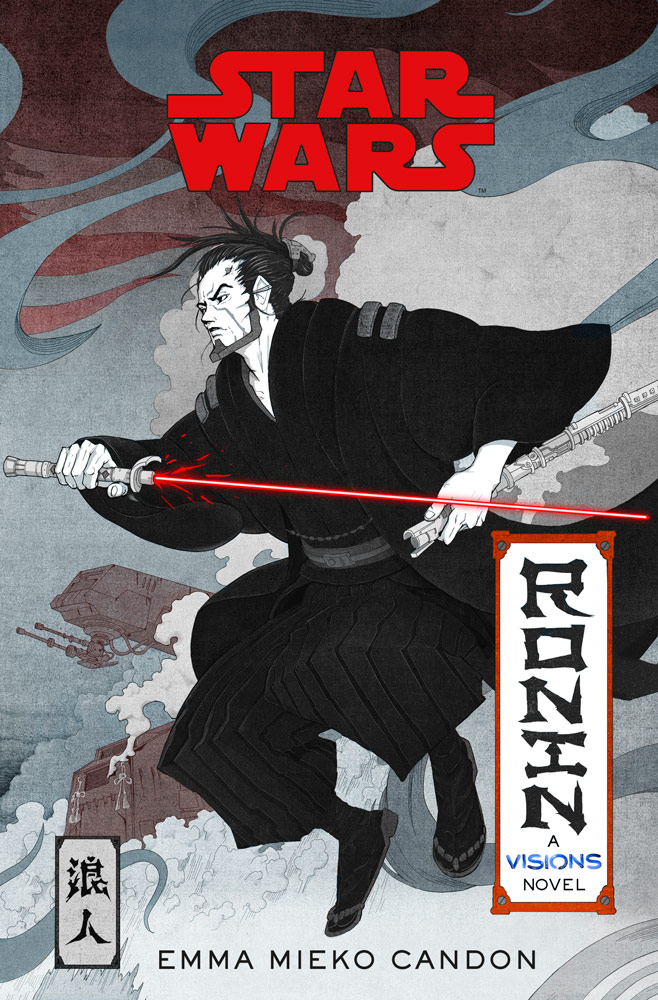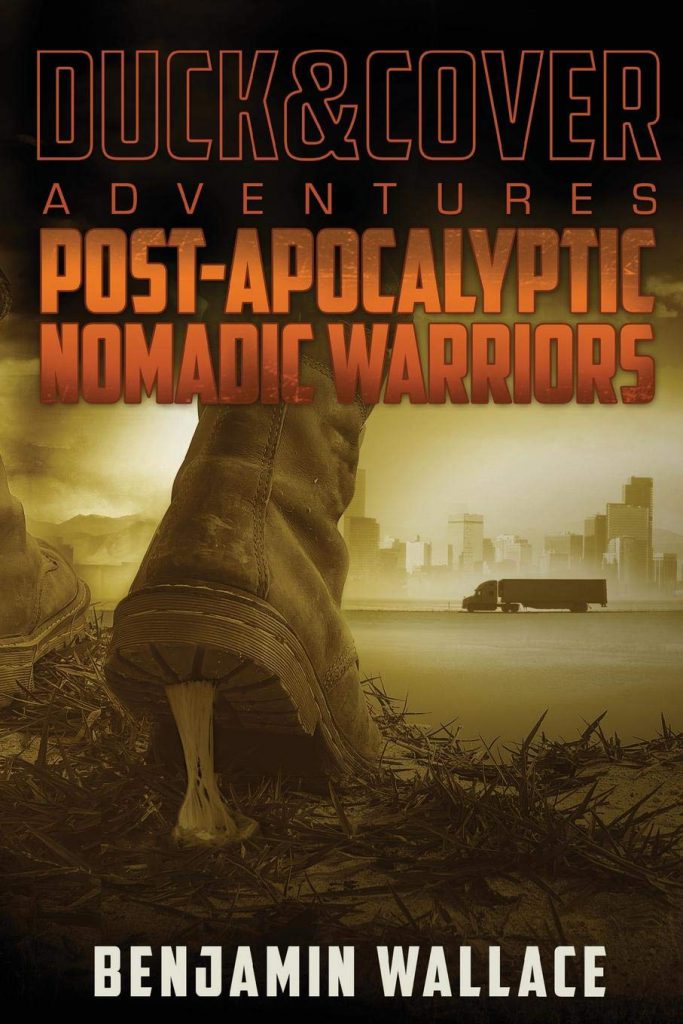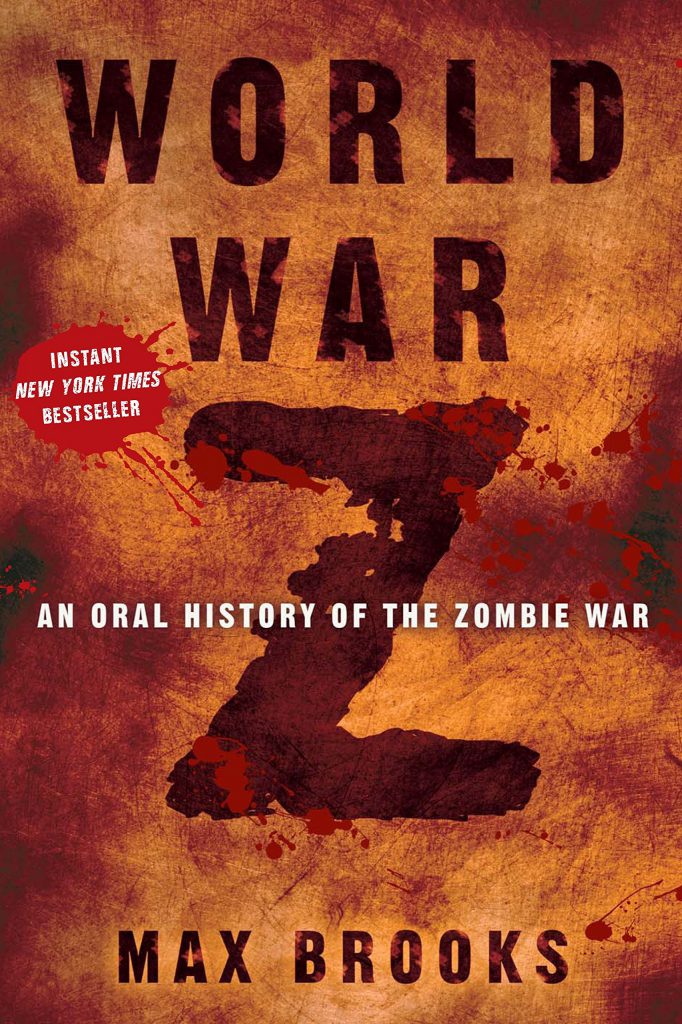Search the Blog
Categories
- Books & Reading
- Broadband Buzz
- Census
- Education & Training
- Friday Reads
- General
- Grants
- Information Resources
- Library Management
- Nebraska Center for the Book
- Nebraska Libraries on the Web
- Nebraska Memories
- Now hiring @ your library
- Preservation
- Pretty Sweet Tech
- Programming
- Public Library Boards of Trustees
- Public Relations
- Talking Book & Braille Service (TBBS)
- Technology
- Uncategorized
- What's Up Doc / Govdocs
- Youth Services
Archives
Subscribe
Tag Archives: #FridayReads
Friday Reads: The KLF: Chaos, Magic, and the Band Who Burned a Million Pounds by John Higgs
Bill Drummond and Jimmy Cauty of UK band, The KLF, reunited for 23 minutes at 00:23 on August 23, 2017 (8+2+3+2+0+1+7=23) for one final show. It had been 23 years since their last performance.
In 1995 they had written up a contract banning them from discussing their band (The KLF), their art foundation (the K Foundation), or the unbelievable act they committed the year prior, for 23 years. The contract, written on the top of a ‘68 junker named Ford Timelord, was then pushed off a cliff. By this point, they had already deleted their entire back catalogue of music.
The year before, they had taken one million pounds of cash they made from topping UK charts to a Scottish island with a single press witness who recorded the event and they burned it all up. It was even verified by their bank.
They made it a movie and screened it all over the UK. After each show, they would invite the audience to debate why they burned it all and what it meant.
The public wrote them off as assholes. Not only had they burned an insane amount that most of us will never get close to, but they couldn’t even say why they did it.
Music Historian John Higgs returns to the question in his book, The KLF: Chaos, Magic, and the Band Who Burned a Million Pounds, to place it in a new context—magic.
To explain this, Higgs repeatedly turns to Alan Moore, friend of Drummond and creator of V for Vendetta and Watchmen. Moore speaks on a version of collective unconscious that he calls Ideaspace—a vast universe of ideas, invisible, but accessible to all of us. It includes the private and public, real and unreal, known and unknown; an endless place where ideas can be entire continents. It’s an ether of creativity, emotion and, in the furthest corners, madness. It does not exist but it creates. This is the magic.
I’m paraphrasing, but Higgs clarifies the path to arrival at this point: “As everyone from magicians like Moore to the most rational scientist will tell you, magic is only in the mind. But this, of course, is also the realm of art—it’s the role of art to explore and illuminate and express this very territory” (167).
Higgs traces The KLF’s journey into outer Ideaspace, moving farther and farther away from the busy main street of regular, everyday, easily digestible ideas. The spectacles they brought out of Ideaspace reflected this: they wore horns on their heads, performed fake pagan rituals, dressed as ice cream cones on Top of the Pops, they left a dead sheep at an award show after party.
Basically, this isn’t Harry Potter.
However, there is a work of fiction referenced throughout as well. The Illuminatus! trilogy by Robert Anton Wilson and Robert Shea was a sci-fi cult classic wrapped in discordianism, a 1960s neo-religion based in chaos and postmodern uncertainty.
The KLF’s first band name, The Justified Ancients of Mu Mu, was taken straight from the trilogy, and Drummond and Cauty made many references both to the trilogy, like their use of the 23 enigma. By tracing these connections, Higgs elucidates the ideas behind their crazy persona. Crazy, but meaningful to them; as Drummond put it, “there is humor in what we do, and in the records, but I really hate it when people go on about us being ‘schemers’ and ‘scammers.’ We do all this stuff from the very depths of our soul and people make out its some sort of game. It depresses me” (147).
Perhaps the money burning marks their point of no return into their ideas. Perhaps it was an attempt to break out of their spectacle and find deeper connection. Perhaps it was a ritual. Higgs doesn’t come to a solid conclusion, fittingly, but his reframing is thoughtful and so, so fun. Grab this copy from the Polley Music library, it is updated edition that includes their 2017 reunion. Their music has started reappearing online, too, while you’re at it.
Higgs, John. The KLF: Chaos, Magic, and the Band Who Burned a Million Pounds. 2012. Blackstone Publishing, 2024.
Friday Reads – “Says Who?” by Anne Curzan
Sometimes I reserve books from my public library and by the time they become available, I have completely forgotten why I was interested. One such book was Anne Curzan’s “Says Who? A Kinder, Funner Usage Guide for Everyone Who Cares About Words.” It fell to the bottom of my library bag and I almost returned it unopened. Fortunately, I decided to skim the introduction and held onto it, and I’m so glad I did.
Curzan’s new book discusses the various linguistic pet peeves she is regularly questioned about as an English professor, radio show host, and member of the Usage Panel for the American Heritage Dictionary. (Did you know this was a thing? It’s quite the who’s who of the “Masters of the English Language.” Go check out the list – I’ll wait!)
Each chapter dives into a common complaint or point of confusion about the use of a word, part of speech, or punctuation, and how the grammar rules most of us learned in school came to be (spoiler alert – it was usually just one guy’s opinion). Curzan also talks about the evolution of common word usage, and the acceptance of those changes into standard usage over time.
Some of my favorite examples Curzan presents include:
- Mark Twain using the adverb “literally” in a way that would make most English teachers want to literally throw their copies of The Adventures of Tom Sawyer at the wall (and Louisa May Alcott does it as well!) (p. 69);
- The incongruity behind why few people notice when the * symbol is pronounced “asteriks” (instead of “asterisk”) but many are agitated when they hear “aks” in place of “ask“. In fact, William Chaucer used both “ask” and “axe” interchangeably in his writing – neither are incorrect, just examples of dialectal differences (p. 92).
- “They” has functioned as a singular gender-neutral pronoun for at least 8 centuries – Shakespeare used it, as did Jane Austen (p. 144).
Through the book, Curzan challenges the reader to step back from their inner “grammando” (a long-overdue replacement for “grammar Nazi”) and embrace their inner “wordie”- to be curious, not judgy, and find joy in the ever-changing English language and its many dialects and variations.
Curzan, Anne. (2024). Says Who? Crown.
Posted in Books & Reading, General
Tagged #FridayReads, Anne Curzan, books, Friday Reads, grammar, Reading, word usage
Leave a comment
Friday Reads: ‘Bookshops & Bonedust’ by Travis Baldree
High fantasy, first loves, and secondhand books.
Bookshops & Bonedust is a prequel to Legends & Lattes, which was a previous NLC Friday Reads.
Both of these cozy, fantasy novels follow Viv, an orc barbarian, as she has not your typical barbarian adventures. Although, her barbarian skills do play a part, just in more unusual ways.
In this novel, Viv’s leg has been injured too badly to continue questing with her group of mercenaries, so she must take a break to heal up and recuperate. She is left behind in Murk, a quaint ocean town. At first, she is understandably angry and frustrated about her situation.
But, Murk isn’t as sleepy and boring as she assumes. Viv befriends the owner of a bookshop, helping her revive her struggling business, and falls in love with reading in the process. Perhaps this plants the seeds of what happens when Viv decides to retire from adventuring in Legends & Lattes?
But it’s not just a relaxing break for Viv. There’s the mystery of a necromancer, skeletons popping up everywhere, and a summer romance. Readers of Legends & Lattes will enjoy learning more about the history of Viv’s sword and her future friendships.
If you enjoyed Legends & Lattes, as I did, you will definitely feel the same about Bookshops & Bonedust. I hope the author has more stories about Viv to tell. I’d love to learn more about her past adventuring days or her life after settling down.
Friday Reads: Tasting History by Max Miller
In February 2020, Max Miller posted his first Tasting History video to YouTube. A week later COVID-19 hit, and he was furloughed from his job. As the world entered the beginning of the pandemic lockdown, people went online, looking for entertainment, distraction, and connections. Tasting History was there. And the rest is, well, history.
Now, his viral video series has become a cookbook, Tasting History, Explore the Past through 4,000 Years of Recipes. Full disclosure: I haven’t cooked anything from this cookbook yet, I’ve just been enjoying reading through it so far.
We have been watching the Tasting History videos almost from the beginning, so when Max announced there would be a cookbook coming out, I knew we had to have it. And I was not disappointed.
The videos are a combination of recipe demo and history lesson, and that format has been carried over into the cookbook.
The book is arranged by geographic area: The Ancient World, The British Isles, Continental Europe, The Near & Far East, and The New World. Within each section the recipes are from oldest to newest. The oldest being Stew of Lamb, from Babylon, c. 1740 BC. The most recent recipes are both from 1914: Simnel Cake from England and Pecan Pie from Texas. Each recipe includes a few paragraphs about the history of the dish and the area of the world it originates from.
Since many old recipes do not provide precise measurements, or ingredients that we may recognize or have access to today, Max has re-created them as best as he can, based on his own cooking and historical knowledge. If you watch his videos, he does taste each dish, and he doesn’t always like them. But, that’s part of the fun and experimentation.
I think Tasting History, both the cookbook and the video series, is perfect for foodies, history buffs, or foodie history buffs. Max is still making videos, and I look forward to watching the new ones every week. A fun tip: he is a big Pokemon fan, and there is always a figure or plush in the background of each video that relates to the dish he is making. See if you can find them all!
Friday Reads: Cat + Gamer by Wataru Nadatani
I am a gamer, and I have had cats as pets for almost my entire life. So, obviously, I had to read this book.
Cat + Gamer is the first volume of the English translation of the Japanese manga, written and illustrated by Wataru Nadatani. Dark Horse Comics is releasing the collected volumes in North America. So far three volumes are available, with five more to come.
The manga tells the story of Riko, an incredibly efficient office worker. She always goes above and beyond when it comes to her job, and leaves work promptly at 5pm every day. Her co-workers try to invite her to join them for after work hours socializing, but she’s never available. Some of them think she’s anti-social, others say she’s just a very private person.
But, they are all curious – what is her secret life? Well, Riko has a passion for video games! All of her free time is spent playing video games, researching all of the side quests and boss fights, making sure she doesn’t miss a thing. As far as she’s concerned, it’s the most fun and rewarding thing to do.
Until one day her life changes forever. A stray kitten is found in the parking lot of her office building, and for reasons she doesn’t understand, she agrees to take it home.
The book alternates between her viewpoint and the cat’s viewpoint, as they both learn about each other. Riko uses her gaming skills to raise the kitten, ‘leveling up’ the tiny animal, vowing to ‘max out this cat!’.
Cat + Gamer is a story that will obviously appeal to gamers and cat owners. But, anyone looking for a fun, quirky read will appreciate it, too. And don’t worry, the gaming parts of the book are described in a way that I think anyone can understand.
I’ve only read the first volume so far, but I enjoyed it so much, I’m definitely going to be picking up the others.
Friday Reads: The Druid’s Call by E.K. Johnston
In all good hearts is a spot of darkness, and in all tragedy is a glimmer of light. – back cover quote.
I picked up this novel after watching the new Dungeons & Dragons movie, Honor Among Thieves. I have been playing D&D for almost 20 years, and in my opinion the movie was an accurate representation of a typical campaign. Exciting, fun, and full of unforeseen events and missteps.
The Druid’s Call is a prequel to the movie, telling the origin story of the tiefling, Doric. In the current 5th edition of D&D, tieflings trace their origins to a deal made in ancient times between power hungry humans and devils from the Nine Hells. Now, they look mostly human, but with horns and a tail, reminiscent of their devilish ancestry.
Tiefling ancestry can hide for many generations and as can sometimes happen, Doric was born to human parents who abandoned her as a child, due to her appearance. Doric struggles to find her purpose and even after being taken in and accepted (mostly) by a group of Neverwinter Wood elves, still feels like an outsider. Her best friend, Torrieth, is very supportive of Doric, encouraging her to practice being a ranger, like the other elves. However, they both soon learn that Doric’s abilities are really that of a druid.
As there are no druids in the elven community, Doric must leave the elves and travel to the Emerald Enclave to train as a druid. It is a difficult journey for her, full of adventures and encounters, both good and bad.
In the end, Doric learns to accept her tiefling and druid self so that she can return to her true family, her elven clan, and help protect them from the humans who have started moving deeper into the elves’ woods, destroying the forest as they go.
I was expecting this book to be like the movie, with campy escapades and exciting fight scenes. But, it was much deeper than that, and I truly appreciated how the author delved more into the characters in the book. As a D&D player, I know that The Druid’s Call portrays the Dungeons & Dragons universe accurately. But, you don’t have to know anything about D&D to understand and enjoy this book. (Or the movie.) The author has done a great job of presenting the D&D world so that anyone who likes fantasy, adventure, and an inspiring story will enjoy this book.
Friday Reads: The Ancient One by T.A. Barron
Today is Arbor Day – go out and plant a tree! To celebrate the day, I decided to read a book about saving trees. Giant, magical redwood trees.
The Ancient One, by T.A. Barron is the second book in a trilogy about the adventures of thirteen year old Kate, but it is an entirely stand-alone novel. You don’t need to read the other books in the series to understand and enjoy this one.
Kate is visiting her Great Aunt Melanie, who lives in a rural town in Oregon where logging companies have done so much clear cutting of the forest that they are running out of trees to cut down, and work is almost impossible to find anymore. Tensions are high and many citizens are angry about the loss of income.
But, a new source of trees has recently been discovered – an ancient redwood forest in the Lost Crater, a previously inaccessible extinct volcano. Aunt Melanie has been working to protect the trees from the loggers – they may be the oldest redwoods on the planet and they were a sacred place to a lost Native American tribe, the Halamis.
Aunt Melanie is quite the mysterious figure, loving and supportive, but also full of secrets. There’s something just a bit different about her. And she has a special connection to her walking stick, with its carved owl’s head handle. Strange things seem to happen when she is around. As Kate is being chased by some boys in town, she trips and falls, but the boys keep running right past her, as if they didn’t see her laying in the mud, as if she wasn’t even there. And suddenly, Aunt Melanie is there, dismissing Kate’s confusion and making curious comments about being … invisible?
Kate and Aunt Melanie hike into the Lost Crater, to hopefully stop the loggers from cutting down the redwoods. When Kate must return to the redwood grove to retrieve Aunt Melanie’s accidentally left behind walking stick, she is transported back in time, where she becomes involved in a battle to save the same forest from an evil force.
I truly enjoyed this fantasy novel with its strong environmental message, it’s a combination that I haven’t read before. The world of the past is well developed and Kate’s encounters, unfortunately, mirror the struggles in our own time over climate change. It will definitely make you think about nature and how we should be protecting it, for our future.
Posted in Books & Reading, Youth Services
Tagged #arborday, #FridayReads, Friday Reads, FridayReads
Leave a comment
Friday Reads: Battle Dragons: City of Thieves
If you’re looking for a fun, fast moving, unique story about dragons and secrets set in a modern dystopia, the Battle Dragons series by Alex London is for you. City of Thieves is the first book in the series. The second book, City of Speed, came out last August and the third, City of Secrets, will be released in March of this year.
Centuries ago, humans domesticated dragons and now they work in the modern city of Drakopolis: performing jobs such as burning garbage, running the taxi service, and serving as bus drivers. And of course, they are used for battle. The gangs that run the different areas of the city, called kins, compete with each other over territory, loyalty, and resources in dramatic, illegal dragon battles.
The main character, Abel, is a teen boy who is struggling to figure out what he will do with his life, since he failed his Dragon Rider Academy Entrance Exam. His brother and sister both passed their tests, although they took different paths after. His brother Silas is a dragon rider cadet, part of the city’s police force. His sister Lina however, choose not to become a dragon rider and instead works at Chimera’s All-Night Coffee and Comics shop. And maybe is involved in something else, as Abel starts to discover one night when she entrusts him with a secret hidden in a comic that she gives him.
That same night, enforcers from the Red Talon kin, the gang that controls the part of the city where Abel and his family lives, come banging on their apartment door, looking for Lina. But, why? Abel must figure out what the secret is that Lina asked him to keep.
With the help of his best friend, Roa, Abel tracks down his sister’s secret – a stolen dragon! The dragon bonds with Abel and that’s when the story really starts, as they are thrown into the world of the kin gangs, deal with the conflict between Abel’s siblings, and learn more than they expected about their city, its dragons, and themselves.
A nice touch to the physical copy of this book – the endpapers are embossed to look and feel like purple dragon scaled skin. I have only read the first book so far, but I am definitely looking forward to continuing with the other books in this series.
Friday Reads: Star Wars: Women of the Galaxy
Who is your favorite woman in the Star Wars universe? You may find her in this wonderful character guide, Star Wars: Women of the Galaxy, written by Amy Ratcliffe and illustrated by a group of incredibly talented female and non-binary artists.
“They are heroes and villains, Sith and Jedi, senators and scoundrels, mothers, mercenaries, artists, pilots….”
This oversized coffee table book tells the stories of 75 female characters from “films, fiction, comics, animation, and games”. Some of the profiles are your typical fictional character biography and others include background information about how the characters were envisioned and created. As a contributor to StarWars.com and Star Wars Insider, Ratcliffe has insider knowledge and shares details about these women that you may have never heard before.
The artwork is beautiful and in varying styles. There are over 100 illustrations from 18 amazing artists, such as comic book artists Annie Wu and Elsa Charretier, Lucasfilm artist Amy Beth Christenson, freelanceers Eli Baumgartner and Viv Tanner, and one of my favorite geeky artists, Karen Hallion.
You will find many characters you recognize as well as lesser known women (and droids!), but all of them make Star Wars a vibrant and inspiring place. I have been a huge Star Wars fan from the very beginning. Yes, I saw Star Wars in the theater in 1977. But the franchise has expanded so much since then, even I learned about many female characters I had never heard of, mostly from all of the novels and comics. Which has made my need-to-read list even longer!
Who is my favorite woman of Star Wars? I can’t pick just one. My first choice of course is Princess Leia, more recently Ahsoka, R2-KT, and Doctor Aphra. And of course, as the Chief Librarian of the Jedi Archives, Jocasta Nu holds a special place in my heart.
Finally, as the first woman of the Star Wars galaxy, the simple dedication For Carrie Fisher is perfect.
Friday Reads: The Witches of New York by Ami McKay
‘Those averse to magic need not apply‘
Historical fiction isn’t usually something that I read. But, add the supernatural to the mix, and you have my attention.
The Witches of New York is a sequel to Ami McKay’s The Virgin Cure. It continues the story of Moth, now called Adelaide, who is running a ‘tea shop’ with another witch, Eleanor. And we can’t forget their raven companion, Perdu.
New York City in 1880 is full of ghosts, witches, demons, and other paranormal beings. Witches of all levels and types perform their own spells and hexes, as they need them. But, for those who do not have the natural ability, there are places you can go to have your fortune told or for magical help for issues such as insomnia, a cheating spouse, or unwanted pregnancies. Adelaide and Eleanor’s Tea and Sympathy is one such place, if you know about it.
After hiring the young witch Beatrice as an assistant shop girl, the trio of witches catches the attention of a demon, who is not happy with how powerful they are becoming. Naturally, a preacher is also sermonizing on the evils of women who think for themselves, and he is encouraging his congregation to rise up against such women. The perfect group for a demon to manipulate to do his dirty work.
The Witches of New York is a well-paced novel, with lots of historical details, which I discovered I really enjoyed. Adelaide, Eleanor, and Beatrice are strong, independent, intelligent women who use their skills and witchcraft to navigate the misogynistic world of Gilded Age New York. I was very easily drawn into the lives of all of the characters and didn’t want their story to end.
Luckily, if you’re interested in reading more tales of these witches, there is a follow-up novella, the much shorter Half Spent Was The Night: A Witches’ Yuletide. Yes, a witchy Christmas story.
Friday Reads: Heroes’ Feast: The Official D&D Cookbook
From the Wizards of the Coast description of Heroes’ Feast: The Official D&D Cookbook, by Kyle Newman, Jon Peterson, and Michael Witwer:
“80 recipes inspired by the magical world of Dungeons & Dragons – perfect for a solo quest or a feast shared with fellow adventurers.”
This cookbook “invites fantasy lovers to learn about their favorite fictional cultures through their unique cuisines and lifestyles. With this book, you can prepare dishes delicate enough to dine like elves and their drow cousins or hearty enough to feast like a dwarven clan or a boisterous orcish horde. All eighty dishes – developed by a professional chef from one of the country’s top test kitchens – are delicious, easy to prepare, and composed of wholesome ingredients readily found in our world.”
Being long-time D&D players, my husband and I just had to have this cookbook. Sometimes you take a risk with these themed books. But, in this case, it was worth it.
The book is divided into six sections. First there are the five Cuisines: Human, Elven, Dwarven, Halfling, and Uncommon, followed by the final chapter, Elixirs & Ales.
Each section begins with a deep dive into that particular culture. At the beginning of each individual recipe, there is a short explanation about it or suggestions on how to use it. The writers are D&D experts, and it shows. They really know how to pull you into the realms and the fare of each of these peoples.
The first recipe my husband tried was the Yawning Portal Buttermilk Biscuits. This was actually his first time ever making buttermilk biscuits. And they were a huge success! Very moist and with a great flavor.
So, the recipes in this cookbook are legitimately good. I can’t wait to try more!
Of course, anyone who has played D&D before will enjoy Heroes’ Feast. But, with all of the lore that’s included, it’s also a good introduction for those who are curious about this world. So, roll your D20, grab a plate, and dig in!
Friday Reads: The Business of Building a Better World & Compassionate Careers
I’ll just put it out there: Income inequality disturbs me, and I have a special dislike for businesses that put profits before people. This book does too. The Business of Building a Better World outlines the changes that need to take place for businesses to support humanity, rather than treat people like human capital. To me, this statement seems obvious. People are human and want to know that the work they do everyday means something. Businesses should help solve climate change, gender and racial inequalities, environmental issues, oceans polluted by plastics, and more. Even if social change is not the core mission, businesses shouldn’t make the problem worse.
Yet this book is described as “a visionary look at the future of business”. As someone who has worked in nonprofits and libraries her whole life, I remain baffled that this concept is new. Luckily, this book isn’t the only one talking about how to change the business world for the better. I chose this book for this review because the title does not include “social change”, “social justice”, “manifesto”, or any number of other overwhelming or potentially triggering worlds.
Published recently in November 2021, this book acts as a summary, using stories and articles to show how businesses need to change to support the world. The book focuses on changes to leadership, from management practices to a shift in core values. Yet I read the book for a different reason.
I’ve been helping libraries build resources related to technology, skill-building, and the future of work. Like many, I realized that both leaders and employees need to change. Employees need to change the way they vet out employers and decide what to do for a living.
Look at the flip side in Compassionate Careers: Making a Living by Making a Difference, by Jeffrey W. Pryor. Part of the incentive for businesses to change is for employees to demand change and communicate the desire for work that makes the world better. By shifting the way we look at existing and future jobs, we can all make a difference.
We can’t have one side of the coin without the other. Leaders and employees need to work together. Neither book should be revolutionary. Nobody should bat an eye because the concepts are so obvious. People deserve to work under leadership that treats them like humans who are part of the wider world. Leaders should only be leaders if they understand what matters to people and how their organization can support the wider world.
Try to say it out loud: I deserve work that matters in the world. We all do. Our collective systems should support work that builds a better world. How did that feel? Could you get the words out? Did the words come naturally, or did your tongue feel thick with disbelief and anguish that future generations could have meaningful work while you did not?
Read The Business of Building a Better World and Compassionate Careers if you want the world to suck less in the future. As libraries continue to support job searches, career exploration, and the search for personal identity, maybe we help turn the tide for the better.
Friday Reads: Star Wars: Ronin: A Visions Novel by Emma Mieko Candon
“I am my own blood,
and these are my own people.
Never again do I serve the Jedi.
Never again do I yield to their lords.”
―The Ronin
Star Wars: Ronin: A Visions Novel, the debut novel by Emma Mieko Candon, is inspired by the first episode of the anime anthology series Star Wars: Visions, ‘The Duel’. The series is a re-envisioning of the Star Wars universe, with each episode an original story produced by various Japanese animation studios.
The novel begins with re-telling ‘The Duel’, the story of a lone wandering Ronin and his droid, B5-56, who come upon a village besieged by Stormtrooper bandits. The Ronin fights their leader in an attempt to free the village from them. But the novel provides more background and details, giving a better understanding of the anime episode. Then it continues with the Ronin’s further travels and battles throughout the Outer Rim.
Just like the anime series it is based on, Ronin is not part of the official Star Wars canon. It’s an alternate history of the Jedi and the Sith, in which the Jedi are feudal clans and loyal servants in their Empire. The Sith are a sect of the Jedi who attempted a rebellion against the status quo, but failed.
It is well known that George Lucas was influenced by Japanese cinema when creating Star Wars, and that same influence is well-represented here. Ronin is Star Wars set in a fully realized Japanese culture. That’s no surprise, as the novel is written by a fourth-generation Japanese-American.
With it’s more fantasy style of story-telling, Ronin is very different from other Star Wars novels. And I mean that in a good way. If you’re unsure if Star Wars literature is for you, I recommend trying Ronin. It is both completely separate form the Star Wars you know, and completely embraces it at the same time.
Friday Reads: Post-Apocalyptic Nomadic Warriors by Benjamin Wallace
What does a librarian do after the apocalypse? He becomes a post-apocalyptic nomadic warrior, of course!
Post-Apocalyptic Nomadic Warriors, by Benjamin Wallace, is the first book in a series, the Duck & Cover Adventures. There are 5 novels in the series, plus an anthology of short stories.
You would think that, seven years after nuclear bombs and chemical weapons destroyed civilization, there would be plenty of work for such a person. Chaos reigns, food and medicine is scarce, mutants and cannibals are around every corner! And don’t forget the Super Smart Bears. Right? That’s what we’ve all been told an apocalypse would bring.
But, no, not this apocalypse. Things are actually going…OK. Most people have gathered together into safely walled communities, growing plenty of food, governing themselves with few issues. The Librarian believes that they need his help anyway, and travels from town to town with his female mastiff, Chewy, offering to save them from whatever they might need saving from. He tries to convince the town of New Hope, Texas that they need to hire him. But, he’s told they’re doing just fine and don’t require the Librarian’s services, literally throwing him out the front gate.
The Librarian isn’t the only post-apocalyptic nomadic warrior around, though. His rival, Logan, has also come to New Hope. And he tells the town that there actually is a roving band of killers out there, and they may be on the way to New Hope next.
Will the Librarian or Logan be the savior of New Hope? Is there really a silver lining in an apocalypse? And how smart are Super Smart Bears anyway?
If you’re looking for a quick, fun read that doesn’t take the apocalypse too seriously, this book is for you.
Friday Reads: World War Z by Max Brooks
Yes, Max Brooks is Mel Brooks’ son. No, World War Z is not anything like Spaceballs or Young Frankenstein. Just get that out of your head right now. No comparison. None.
World War Z: An Oral History of the Zombie War brings the zombie apocalypse to life through the shared stories of military personnel, medical professionals, filmmakers, rescue workers, submarine operators, political figures, and other key players of the Zombie War. The book has been out since 2006, but the zombies are more real today then ever before. I learned more about global politics and human relations from this Oral History than I did in a semester’s worth of World Politics in college. The zombies were an added bonus to my global education.
The audiobook version of World War Z is narrated by a full cast of characters who personalize each story as their own. I listened to the chapter narrated by Allen Alda twice because he has seen war! I may have also re-watched a couple episodes of M.A.S.H. in between. Alda was acting in M.A.S.H. The zombies are here today. There’s a difference.
Each chapter takes you to a new part of the world. Travel to Japan, China, Korea, Denver, the open ocean, and more. See the world from every perspective and hear from the people on the front lines of the zombie war. These people made sure the world kept spinning, even as loved ones turned into flesh-eating zombies, decimating the global population. It’s a messy job, but somebody’s got to do it.
The global travels begin with patient zero in China, through the initial spread and panic, and on to the perseverance of the human population. I won’t spell out the ties to the current pandemic, but it’s not a great leap to link the two together. I’m sure there will be high school and college papers written on the topic for years to come.
Read World War Z to escape the current pandemic and learn about the real world from different perspectives. If you’ve read the book before, give it a listen. Close your eyes and embrace the chaos. Consider it a practice run.
Brooks, Max. World War Z: An Oral History of the Zombie War. New York: Crown, 2006. Print.
Friday Reads: The Oracle Code
I have discovered that part of my pandemic coping is more quick reads. For me, that means comics and graphic novels. Looking back over the last year, most of my Friday Reads have been graphic novels. Here’s another one I really enjoyed.
I like when I’m surprised by a book that isn’t what I thought it was going to be. The Oracle Code, written by Marieke Nijkamp and illustrated by Manuel Preitano, is a new story about Barbara Gordon, aka Batgirl, aka Oracle. But, it’s definitely not what you may be expecting. It’s not your typical superhero story.
Teenager Barbara Gordon has recently been accidentally shot and is paralyzed from the waist down. Her father, Commissioner Jim Gordon, has sent her to the Arkham Center for Independence to help her adjust to life in a wheelchair.
Barbara is struggling with her new situation, and at first pushes away any of the other teens who try to befriend her, clinging to her previous life and her friend outside the Center, Ben. But slowly, as she participates in her therapies and the other teens refuse to give up on her, she becomes more confident and makes new friends. The other teens at the center are a very diverse group, showcasing a range of disabilities, races, and genders.
But, something’s not right at the Center. Children are disappearing – the staff claim they have just moved on to other places for their therapy. But, Barbara is suspicious – her instincts tell her that they are being lied to.
And….is that a ghost?
Using her skills as a talented computer hacker, and with the help of Ben and the other residents at the Center, Barbara attempts to solve the mystery of what’s happening to the children. At the same time, Barbara works on her own puzzle of who she was, and who she is now.
The Oracle Code is an empowering story about Barbara overcoming her feelings of grief and anger to become a strong, independent heroine.
Posted in Books & Reading, Youth Services
Tagged #FridayReads, Friday Reads, FridayReads
Leave a comment
Friday Reads: The Book of Two Ways by Jodi Picoult
If I were still a reader’s advisor, I would prescribe this book to anyone about to make a major life decision. Someone who is rifling through the archives of life, pondering what might have been if life had pivoted in another direction. There has been plenty of time for this during Covid, so it is sure to be a good read! With one caveat I will mention towards the end of this review.
This book opens with Dawn Edelstein plummeting to the ground in a crashing plane. She is a death doula, working with the dying as they transition out of life. With a husband and daughter at home, she hadn’t expected to shepherd herself along this journey quite so quickly. As Dawn braced for impact, she thought of Wyatt, an Egyptologist she worked with in graduate school.
Dawn survived, but she crash landed in a midlife crisis. The airline offered to send the survivors anywhere they wanted to go in the world. With a head full of memories and the clothes on her back, Dawn went to Egypt to find the one that got away. So it begins.
I assure you, this is not a supernatural story. Dawn is indeed still alive, she does go to Egypt, and Wyatt is doing a dig during the off-season. As it turns out Dawn is a former PhD student studying the Book of Two Ways, an ancient Egyptian map to the afterlife.
As Dawn digs into her past, she uncovers pieces of life that are not so rosy. The death doula has a few skeletons in her closet. Again not supernatural. She didn’t kill anyone and her murdered lovers do not come back to haunt her. The fact that I feel the need to reassure you of this probably speaks more to the other books I have been reading than this one.
Anyway, as the real Book of Two Ways shows there are multiple paths to the afterlife, this book proves that life has options too. The hard part is choosing what will lead to your most fulfilling life. What does that look like? There are too many paths and they all ultimately lead to death. Death permeates this book like a promise.
Alternating between darkness and light, The Book of Two Ways proves that you only live once. So please, go on a journey with Dawn into the past. It’s the only way to make a better future. I won’t say whether she winds up with the one that got away. That’s part of the journey.
So here’s the caveat. Dawn is a former PhD. She speaks ad nauseam about Egyptology, and a bit about quantum physics. If your eyes gloss over and you skim over the meat of these sections, the world is not going to end. Often, when I talk to real PhDs, this sometimes happens. Their eyes light up and words spill out to form a new theory about the world. The info. dumps about Egyptology are realistic, but make this book about you. Read what matters to you.
The Book of Two Ways carves out a path to explore life. There is no point in ruminating on how it ends. Find yourself between the pages. Choose the experiences you truly want to live.
Posted in Books & Reading, General
Tagged #FridayReads, Books & Reading, Friday Reads, Friday Reads, FridayReads
Leave a comment
Friday Reads: The Midnight Library by Matt Haig
“Between life and death there is a library,” she said. “And within that library, the shelves go on for ever. Every book provides a chance to try another life you could have lived.”
This is the idea behind The Midnight Library by Matt Haig. I debated how to write this review without giving too much of the story away and a pro/con list seemed the best way to do that.
Pros:
-An easy read. I had it finished in just a few sittings.
-There are some beautifully written passages that just envelop you.
-The characters are very relatable.
Cons:
-Those beautifully written passages? For me they sometimes felt misplaced and would totally take me out of the story.
-The plot leads you in such a way that you don’t necessarily want to take the time to read everything fully, you just want to get to the next plot point.
-Everything about the book feels very unoriginal and overdone. It seems more like something you’d see someone write for a short story class in college, not from a well-known author.
During the pandemic reading, for me, has become more of a chore than being enjoyable. For every book I do manage to finish there are ten that I don’t, or don’t even really start. It was nice to find a book that caught my attention enough to stick with it and even with all its faults it wasn’t a burden to read.
Would I suggest rushing out and buying it? No, but if you happen across it in the library someday maybe check it out.
Posted in Books & Reading
Tagged #FridayReads, Books & Reading, Friday Reads, Friday Reads, FridayReads
Leave a comment
Friday Reads: The God of Small Things by Arundhati Roy
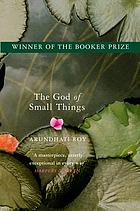
I just started The God of Small Things by Arundhati Roy, and I’m so glad I did. Over a foot of snow on the ground outside calls for some entertainment set in warm climes. Summer in India reads really well right now.
I bought this book a few years ago, when it was required for a class I was taking, and then the school changed the professor for the class, and that new professor changed the books. This book was the one from the original slate that I was looking forward to the most. I was happy to take it off the shelf this week. It’s the story of twin boys and their connection to each other, as their family, which is already going through some things, welcomes visiting relatives who have their own problems. It’s lush and full of surprises from the beginning, and yet never goes out of rhythm.
This is Roy’s first novel, and it follows her training as an architect and her work as a production designer. There’s a lot going on in this book, but we’re in good hands. Roy knows her details and characters and shares them with us luxuriously, but never overwhelms us. Her vision is clear, and her characters are wonderfully flawed, and their relationships are familiar, yet unexpected, in their complexity.
And of course, The God of Small Things won the Booker Prize, which is always a good recommendation. If you like well-planned sprawling stories about families full of interesting characters, and not a snowdrift in sight, you will want to check it out.
Roy, Arundhati. The God of Small Things. New York: Random House, 1997. Print.
Friday Reads: Bob by Wendy Mass

Confession: my son is a reluctant reader. This pains me both as a mother and a librarian. He was introduced to books as an infant, visited me at the library, was (and is) read to constantly, and there are books everywhere in our house. He can read just fine; it’s just not his preferred hobby. He’ll do whatever it takes to get through his daily 20 minutes of assigned reading and not a minute more. This is obviously a me-problem; what librarian doesn’t want their kid to know the joy of reading?
So I was pleasantly surprised when he voluntarily brought home a middle-grade novel this week. He will often check out a book about animals or cars, or just choose to read picture books aloud to his sister. But this week, he handed me Bob by Wendy Mass. “I heard it’s a good story.” Indeed, it is – I read it in early 2019 and it was a 2020/21 Golden Sower nominee. We are reading a couple of chapters a night (don’t want to exceed that 20 minute limit!).
Bob is the story of a small green creature, dressed in chicken suit, waiting not-so-patiently in a closet for his friend to return. That friend, Livy, has been gone for 5 years and when she does show up, she doesn’t remember Bob or the promise she made to him when she was 5 years old – to help him find his home. Now that they are reunited, they set off to figure out the mystery of Bob.
Bob may or may not kick off a lifelong affinity for the written word, but for this winter break at least, I’m going to savor each page read aloud by my favorite reluctant reader.
Mass, Wendy. Bob. Feiwel & Friends, 2018.
Posted in Books & Reading, General, Youth Services
Tagged #FridayReads, Book Review, Friday Reads, GoldenSowerAward, middle grade, read aloud, Wendy Mass
Leave a comment
